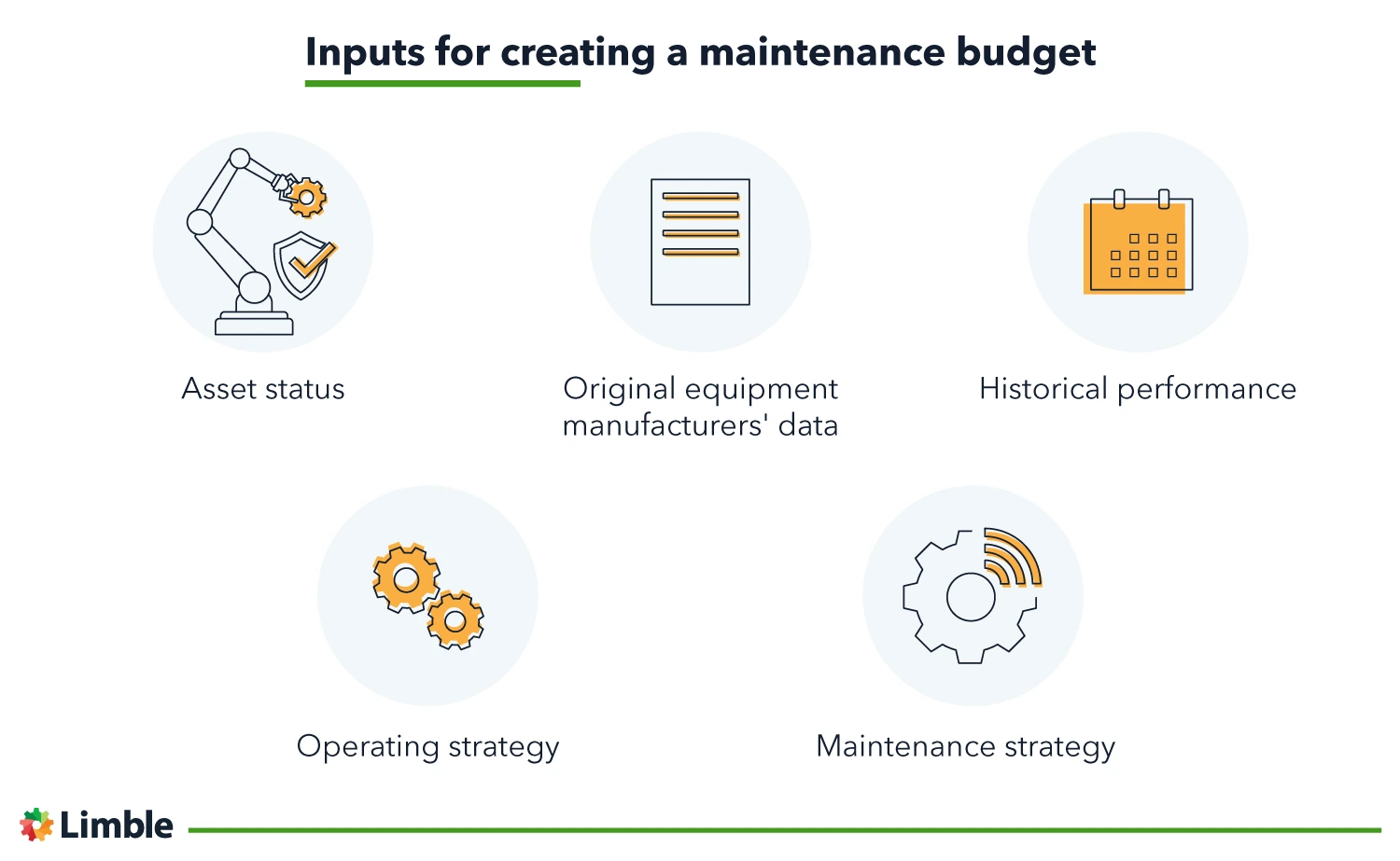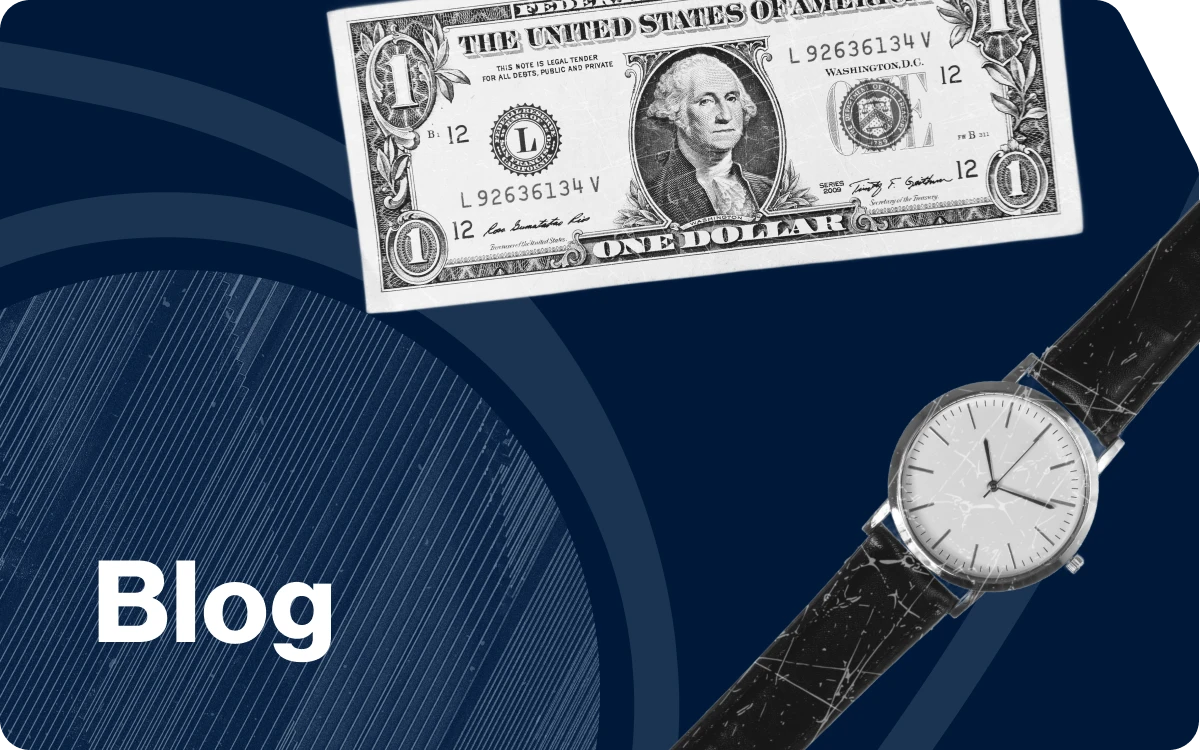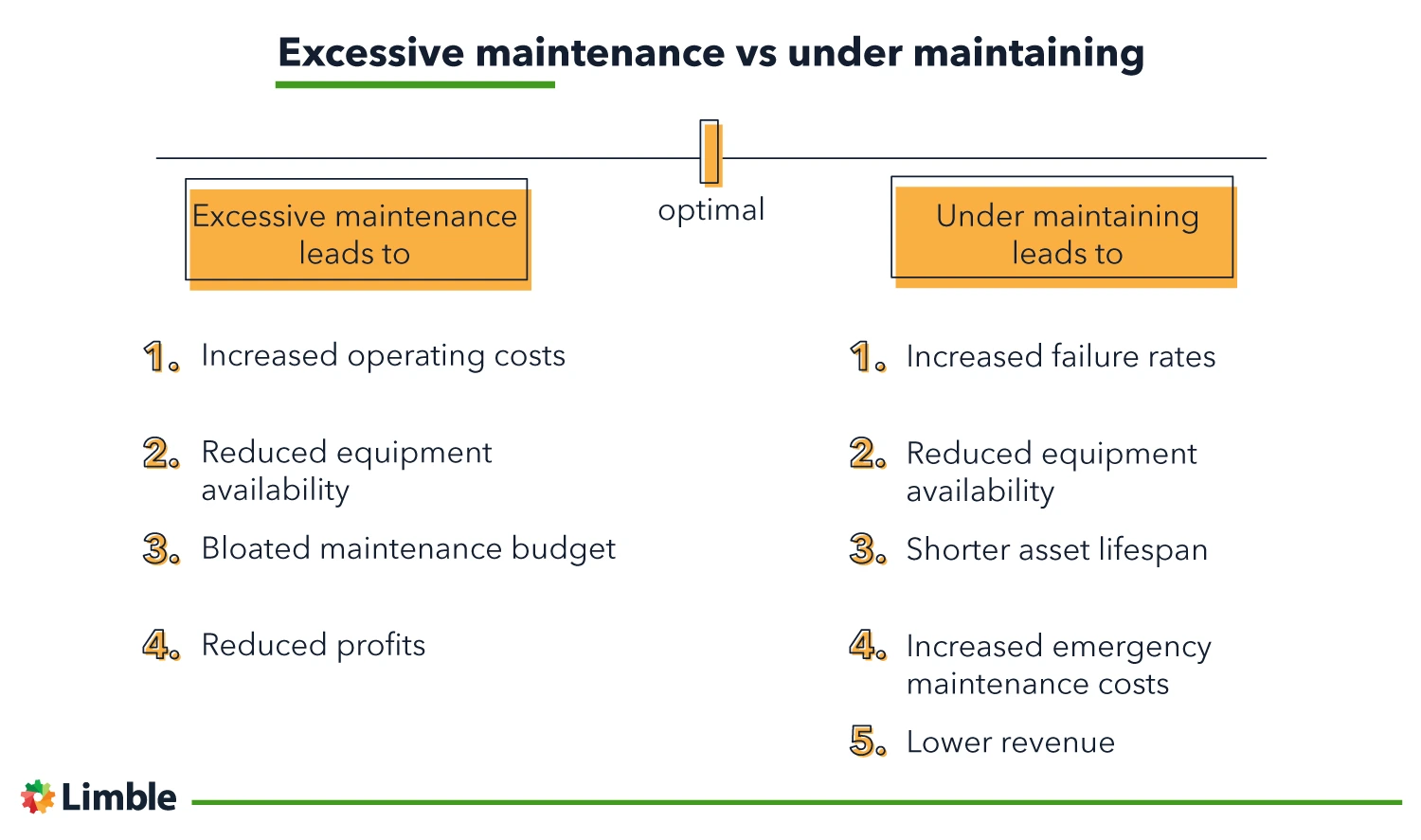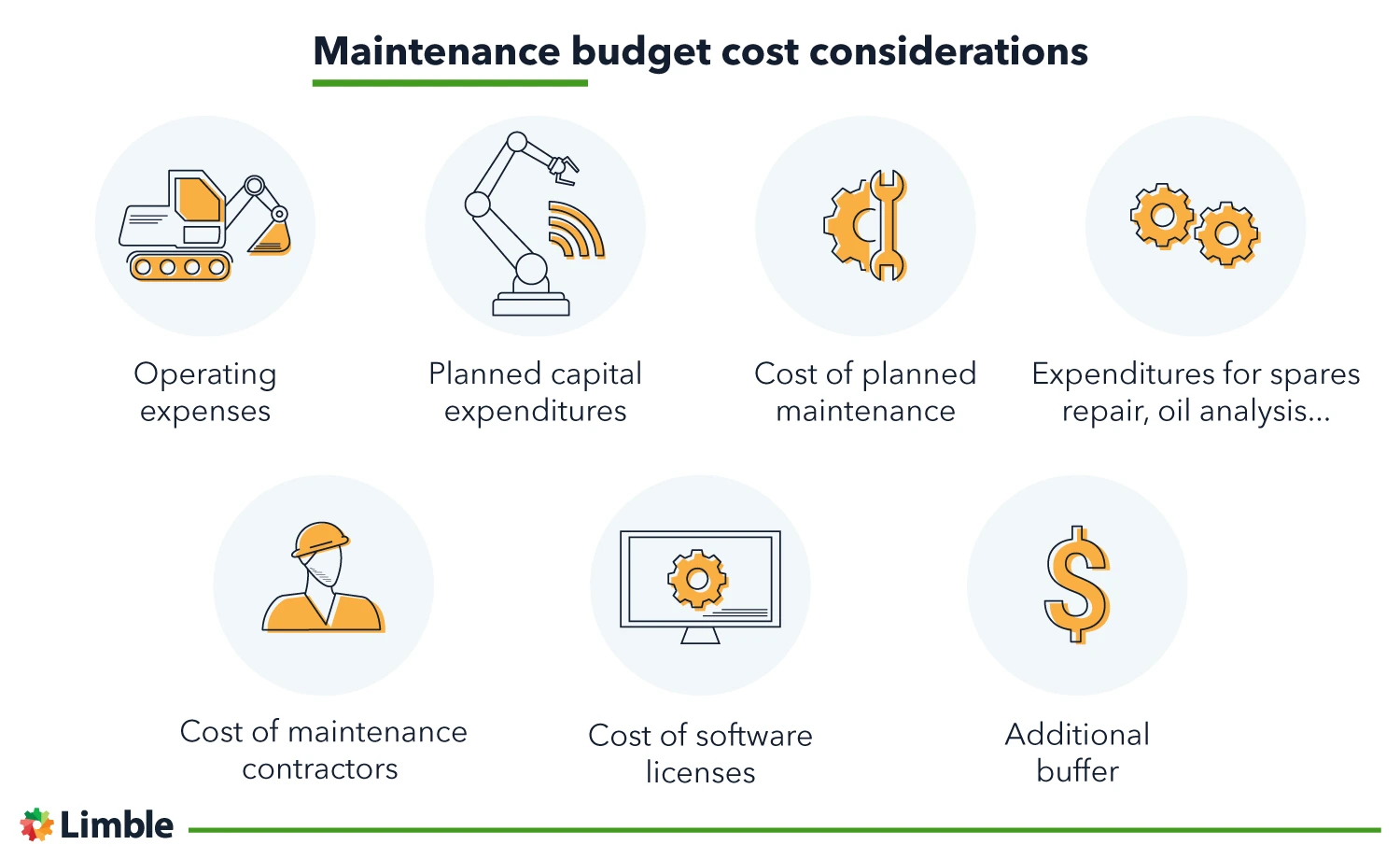Preparing a maintenance budget might not be your favorite task, but it’s a vital part of maintenance cost planning and overall asset management. If you’re responsible for managing upkeep in an industrial plant, manufacturing line, or commercial facility, a well-structured budget ensures you have the resources to keep equipment running smoothly—without overspending. It helps you track the average cost of repairs, plan for routine maintenance, and avoid expensive surprises. In this article, we’ll walk through how to prepare a maintenance budget step by step, explain why it matters, highlight key components, and share a practical checklist to guide the process. Let’s dive in!
Why a maintenance budget matters
A maintenance budget is more than just a financial formality – it’s a tool that helps align maintenance activities with business goals. Smart businesses recognize that maintenance isn’t just a cost center; it can actually enable business success by maximizing equipment uptime and extending asset life. Understanding the cost of maintenance—from labor to spare parts—gives teams the clarity they need to make strategic decisions and avoid wasteful spending. In other words, a well-planned budget turns maintenance into an investment rather than an expense.
Equally important, a good budget prevents the extremes of under-maintaining or over-maintaining your assets. If you skimp on maintenance, you’ll face more frequent breakdowns, higher emergency repair costs, shorter asset lifespans, and even lost production or revenue. On the other hand, if you overspend or perform too much maintenance, you’re wasting money and time – and possibly taking equipment offline more often than necessary. Striking the right balance is key. In fact, many organizations use benchmarks like %RAV (Replacement Asset Value) to gauge their maintenance spend.
Bottom line: a maintenance budget gives you a clear plan to reduce costs, prevent downtime, and support production goals. It provides a baseline to measure your performance and justify maintenance expenditures to upper management. Now, let’s take a look at what goes into a good budget allocation.
Maintenance budget breakdown: Key components
Every operation is different, but most maintenance budget breakdowns include similar categories of expenses. Whether you’re creating a facilities maintenance budget for an office building or a maintenance plan for a manufacturing plant, you’ll need to account for the following key components:
- Labor Costs: This includes wages and benefits for your maintenance technicians, overtime pay for after-hours work, and any additional staffing needs. Labor often makes up a large portion of the budget, so plan for both regular preventive maintenance work and emergency maintenance.
- Spare Parts & Materials: All the parts, components, and consumables required for maintenance tasks fall here. From replacement bearings and belts to lubricants and cleaning supplies, be sure to estimate how much you’ll spend on materials to keep assets running.
- Tools & Equipment: Consider any tools, instruments, or equipment needed for maintenance. This could range from basic hand tools to specialized diagnostic equipment or even rental of lifting equipment for major overhauls. If tools wear out or new equipment is needed, include those costs.
- Contracted Services: If you outsource certain maintenance activities (like elevator servicing, HVAC inspections, or specialized repairs), include the cost of service contracts or contractor fees. Some facilities rely heavily on outside vendors, while others handle most work in-house – your budget should reflect your approach.
- Preventive Maintenance Programs: A strong preventive maintenance budget covers all routine, scheduled maintenance tasks such as regular inspections, lubrication, calibrations, and other proactive maintenance. These preventive maintenance activities are typically easier to forecast because they’re scheduled in advance. Make sure you allocate funds for all planned work orders and inspections (whether done by your team or contractors).
- Unplanned Repairs (Reactive Maintenance): No matter how good your preventive program is, you should set aside funds for unexpected breakdowns and emergency repairs. Unplanned reactive maintenance can be hard to predict and often incurs extra costs (rush shipping for parts, overtime labor rates, etc.). Analyze your past breakdown history to estimate a reasonable contingency. A common practice is to include a contingency reserve specifically for these surprise failures.
- Maintenance Overheads: Don’t forget supporting expenses that keep the maintenance department running. This can include software and technology (for example, licensing a Computerized Maintenance Management System (CMMS) or other maintenance management software), training and certification for your team, safety equipment, and any compliance-related costs (inspections, permits). These may not be tied to a specific asset but are essential for maintenance operations.
- Capital Expenses for Upgrades: While often capital expenditures are handled in separate budgets, it’s wise to plan for major upgrades or asset replacements if you know they’re coming. For instance, if an aging machine will be replaced next year, factor in the cost of the new asset installation, commissioning, or any major refurbishment projects. Even if these are capital costs, including them in your regular maintenance planning conversations ensures nothing catches you off guard.
Your maintenance budget should effectively cover all operating expenses needed to run the maintenance department and support your maintenance team in meeting your facility’s reliability targets. As outlined above, that ranges from everyday items (like labor and spare parts) to contingencies and even planned upgrades. A common mistake is to focus solely on the cost of routine maintenance tasks, when in reality a comprehensive budget encompasses much more—including the tools, training, and support your team needs to succeed. By accounting for all these components, you’ll have a realistic picture of what it truly costs to maintain your equipment and facilities.
Maintenance budget planning template
Now that you know what goes into a maintenance budget, let’s talk about how to put one together. Creating a budget from scratch can feel overwhelming, but breaking it down into steps makes it manageable. Before you start crunching numbers, it helps to gather some important information about your assets and operations (see the figure below). Once you have these details on hand, you can follow the maintenance budget checklist to build out your plan.
Five key inputs for maintenance cost planning include asset status, OEM guidelines, historical performance, operating context, and maintenance strategy.
- Asset Status – Age, condition, and lifecycle stage of each asset.
- OEM Guidelines – Manufacturer recommendations for service intervals, parts, and tasks.
- Historical Data – Maintenance records, past costs, failure trends, and downtime incidents.
- Operating Context – Usage patterns, production schedules, and workload expectations.
- Maintenance Strategy – Your current approach (e.g., preventive, reactive, or predictive).
These insights help you estimate future needs, prioritize spending, and avoid surprises.
Follow these steps to prepare your maintenance budget checklist:
- Define Budget Scope & Goals
Clarify what your budget covers—single site, full department, or specific assets—and align it with business goals (e.g., reduce downtime or cut costs). Get input from leadership on expectations or limits. - Inventory Assets & Assess Condition
List all equipment under maintenance. For each, note age, condition, and criticality. Prioritize high-impact assets that may require more attention or funding. - Gather Maintenance Requirements & Data
Collect OEM maintenance schedules and your own historical maintenance data (e.g., past costs, failure logs). Consider upcoming changes to production or strategy that might affect maintenance needs. - List Planned Maintenance Tasks
Outline all scheduled tasks for the year—inspections, services, part replacements—by asset and frequency. Estimate time, parts, and tools needed. A CMMS can simplify this process. - Estimate Labor & Material Costs
Multiply estimated labor hours by wage rates, and tally up parts and consumables. Break costs down by category (labor, parts, contracts) and look for cost-saving opportunities like bulk orders or vendor consolidations. - Budget for Unplanned Work
Use past data to estimate emergency repairs and breakdowns. Add a contingency (typically 10–15%) for reactive work, including overtime labor and expedited shipping. This acts as an emergency fund within your maintenance budget—helping you absorb the unexpected without blowing your numbers. - Compile & Review Your Budget
Add up planned tasks, material costs, and contingency to get your total budget. Break it down by time period and cost category. Review with stakeholders and adjust as needed to meet company goals. - Track & Refine Throughout the Year
Monitor actual spending with a CMMS or tracking tool. Regular reviews will help you stay on target and improve future budgeting accuracy.
By following this checklist, you can create a thorough maintenance budget that covers all bases. It’s a bit of work upfront, but this level of planning will pay off by preventing surprises and giving you control over maintenance expenses.
Tips to Reduce Maintenance Costs and Stay on Budget
Creating the budget is only half the battle – you also want to manage and reduce maintenance costs where possible so that you can stick to your budget (or even come in under budget!). Here are some practical tips for cutting unnecessary costs and getting the most value out of every maintenance dollar:
- Prioritize Preventive Maintenance
Preventive maintenance may cost more upfront but saves money long term by avoiding breakdowns and extending equipment life. Focus on high-impact tasks and fine-tune PM schedules to avoid over-servicing. - Implement Reliability Strategies
Use predictive tools like vibration analysis or thermal imaging for critical assets. These help spot issues early and prevent costly failures. Also, apply root cause analysis to fix recurring problems once and for all. - Optimize Inventory & Purchasing
Avoid tying up cash in excess parts or rush-ordering at premium prices. Use a CMMS to track usage and keep optimal stock levels. Buy frequently used items in bulk and compare suppliers to cut costs. - Improve Training & Procedures
Well-trained techs work faster, safer, and with fewer mistakes. Standardized Operating Procedures (SOPs) reduce errors and rework. Cross-train operators to handle minor maintenance and catch issues early. - Use Maintenance Management Tools
A CMMS centralizes scheduling, work orders, and costs—giving you real-time visibility into spending. It helps identify high-cost assets, reduce waste, and back up budget requests with hard data.
By applying these strategies, you can reduce maintenance costs without compromising reliability. Small changes, like eliminating unnecessary PM tasks or negotiating better prices on parts, can add up over the year. Remember, the goal is not just to create a budget on paper, but to actively manage your maintenance work in a cost-effective way so you hit those budget targets.
Put your maintenance budget into action
Preparing a maintenance budget may take some effort, but it pays off by giving you a clear plan to manage maintenance activities and expenses proactively. In this guide, we discussed how a maintenance budget helps balance cost and reliability, what key items to include, and provided a step-by-step checklist to build your own. The main takeaways are: be thorough and data-driven in your planning, anticipate both routine and unexpected costs, and use the budget as a tool to support your organization’s goals—like maximizing uptime or reducing operating costs.
With a solid maintenance budget in hand, you’ll be able to justify spending, avoid surprises, and continuously improve efficiency. And remember, budgeting isn’t a one-and-done task—track your costs, refine your plan, and evolve with your operation. Ready to make budgeting easier and smarter? Book a demo with Limble CMMS today and see how we can help you plan, manage, and optimize your maintenance operations—without the guesswork.


